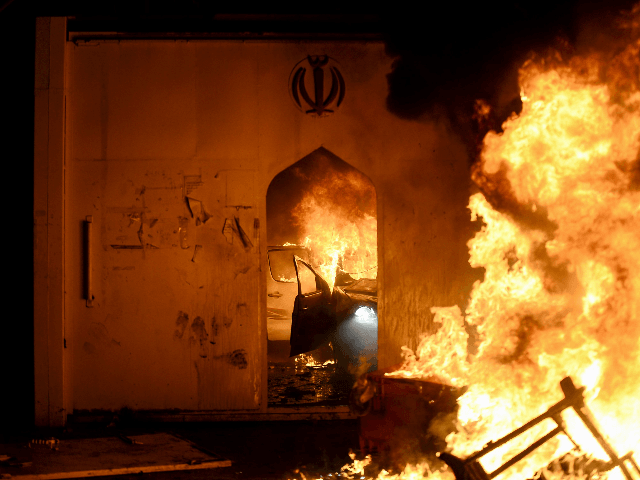Iranian Interior Minister Abdolreza Rahmani Fazli admitted during a television interview on Wednesday that at least 200,000 people participated in protests inspired by rising gas prices across a hundred towns and cities last week, setting fire to about 730 banks, 50 bases used by security forces, 70 gas stations, and 140 government sites.
Reuters noted that while the Iranian regime has given no official numbers for civilians killed, injured, and arrested during the crackdown, outside human rights groups have estimated anywhere from 140 to 400 deaths, and one Iranian lawmaker who sits on the national security committee said there were over 7,000 arrests.
While not giving any firm statistics, the Iranian government has implied the number of deaths was in the single digits, including security troops killed by “rioters.” Previous government estimates claimed only about 87,000 Iranians participated, mostly young men without jobs.
Critics of the Iranian government swiftly noted that even Fazil’s stunning admission probably under-counted the number of protesters by a huge margin, arguing that a week-long nationwide Internet blackout would not have been necessary if only 200,000 people nationwide participated in the protests.
Israel’s Haaretz theorized on Wednesday that Iran moved quickly and brutally to stamp out the protests, which may have been “the strongest uprising in Iran since the Islamic Revolution brought the current regime to power in 1979,” because the regime fears voters are losing their Islamic revolutionary fervor, questioning the competence of their government as the economy crumbles, and possibly planning a mass boycott of parliamentary elections in February.
Haaretz judged the regime has weathered the storm, for now, thanks to “a deliberate display of brutal repression” masked by the swift and total Internet blackout, but those tactics imposed another $1.5 billion in costs on an economy that was already looking at a 9.5 percent contraction in 2020.
“The government isn’t paying salaries and is being forced to dip into its national development fund to try to cover the shortfall. There seems to be no way to avoid more sharp cuts in government spending next year,” the report noted.
That situation would probably reignite public outrage on a massive scale since the regime’s excuse for tripling gas prices was that it needed more funding for welfare and public services. If an election boycott is really in the cards for February, that could be the next major crisis point for Tehran, and could lead to an even bloodier crackdown that can only be hidden by an even longer Internet blackout.

COMMENTS
Please let us know if you're having issues with commenting.